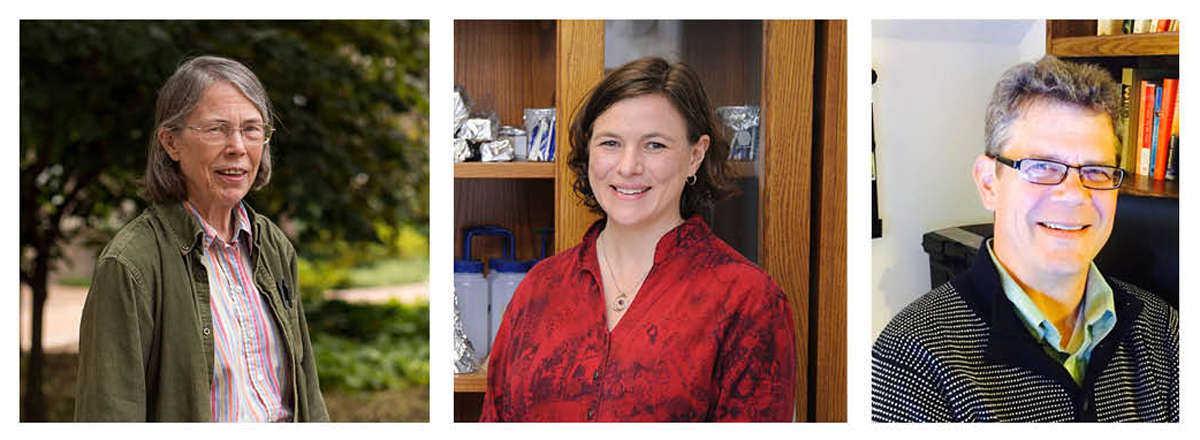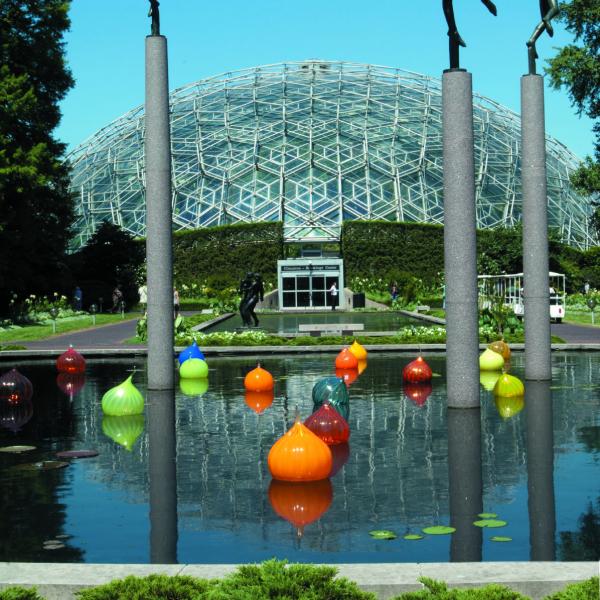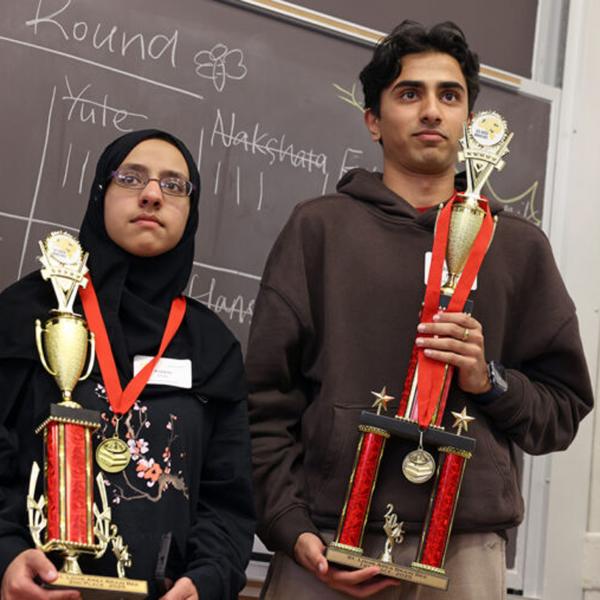WashU Professor Emerita Sarah Elgin talks about the importance of engaging undergrads in hands-on science from day one and how to reach a wider range of college students on a national scale.

The National Academies of Sciences, Engineering, and Medicine (NASEM) is challenging the education community to describe ambitious ideas for the future of undergraduate STEM education, including identifying the steps needed for achieving these ideas by 2040. An idea competition for the Symposium on Imagining the Future of Undergraduate STEM Education posed these questions: What should undergraduate STEM education look like in 2040 and beyond to meet the needs of students, science, and society? What should we do now to prepare?
Viktor Hamburger Professor Emerita Sarah (Sally) Elgin’s project with Laura Reed from University of Alabama and Sam Donovan from University of Pittsburgh, called Teach science by engaging students in doing science: Fully realizing the current opportunities was selected as one of the 25 winners.
Elgin talks about the reasoning behind this idea and how it can be implemented to benefit college science students from all walks of life:
We entered this competition with a description of how undergraduate research could become the core of teaching in Biology. We currently use this approach at Washington University in several freshman opportunities, such as the Phage Hunters program, and in many of our upper-level lab courses. Here we argue that this approach should be more broadly applied in colleges and universities across the country.
The power of learning by doing has long been recognized as the most effective approach toward that end. Thus we propose a future in which science is taught primarily by engaging undergraduate students in doing science. The goal is to democratize science education by making research experiences available to all, maximizing opportunities for our changing population of students, fixing the leaky pipeline, and providing access to the full spectrum of science/technology jobs/careers.
How is your vision different from what is currently happening in undergrad science education?
The majority of undergrad students do NOT attend R1 research universities like WashU that have a large number of active research groups that can take a significant number of students into the lab for a mentored research experience. Also, the WashU system (traditional in the field) is not ideal. Most students do not get into a lab until their sophomore or junior year, after they have committed to science, so there is NO impact on their decision to remain a science major or drop out. WashU does pretty well in providing such opportunities to majors because in addition to the Biology Department, we draw on the labs in the Medical School. That means we have over 300 research-active labs, rather than the 25 or so in the Biology Department, and can accommodate a large percentage of our majors. Many R1 schools do NOT have a medical school; most universities are not R1 schools. State colleges and Primarily Undergraduate Institutions do not have graduate programs in the sciences, so no grad students, postdocs, etc.
Working toward a science degree without doing research is like going to cooking school without ever getting a chance to create a new recipe. First year you read the cookbooks, and look at pictures of food; if you are lucky, you hear some talks from famous chefs who created a new dish, talking about what inspired them and how they did it (probably online recorded material). Then if you get a lab course, you have a chance to follow a recipe and recreate a well-known dish. But how to get a chance to get in on the de novo process? The fun part, where the creativity occurs? There will never be enough labs, enough mentors, enough funding to give all science majors an opportunity for an individual mentored research experience. So we need to think beyond this strategy.
College students must make the decision on whether to stay in science or leave during the first two years, and I suspect that this mostly happens by the end of the freshman year. Several studies show that providing a research experience early can make the difference, and in particular closes the gap in retention between majority and minority students (see Rodenbusch et al 2016). Hence we argue for engaging students in research first thing, fall freshman year. This means that we need to propose a strategy that can be implemented for large numbers of students.
In what ways does starting one’s undergrad education with hands-on science level the playing field, or democratize science education?
On average across the US, it’s difficult to provide students with mentored research experiences, and only the favored few get this opportunity. Lots of students graduate with a BA/BS in science without opportunities to do any research. Our current system emphasizes acquisition of science knowledge over an understanding of how science is done. The arguments for changing this are laid out in the NSF-sponsored AAAS publication “Vision and Change,” which argues for active learning and research engagement.
Lots of faculty across the country have been working on this, and progress is being made, but much more needs to be done to reach our diverse population of students. Note that about half of all science majors start their education in community colleges, which often have very limited lab facilities. The proposal here is to build on the successful CUREs (Course-based Undergraduate Research Experiences), such as the Genomics Education Partnership, but try to get national research projects like this available across the breadth of biology. Similarly, there are successful national experiments being done with freshmen. Phage Hunters, a first year course that employs hands-on methods from day one is one of them. We want to build on the known successes but broaden the effort by one or two orders of magnitude.
How might this be possible?
The key innovation that will make this possible will be to establish a continuing series of national research projects that can facilitate engagement of large numbers of students. NSF and other funding agencies will need to generate appropriate calls for proposals to identify and support these projects, working up to a level that meets national demand. Such projects will likely use a cyber-infrastructure to provide a platform for collaboration, curriculum, data management and faculty training, enabling diverse audiences to participate. The concept builds on already successful CUREs such as the Genomics Education Partnership, and citizen science projects, such as the Great Backyard Bird Count, with a nation-wide reach, expanding this effort to make projects on a wide range of topics available, such that all colleges and universities can offer research opportunities to their students starting freshman year.
A public symposium will be held virtually by NASEM on November 12, 13, and 19 to discuss the topic and present all of the winning ideas. The symposium will bring innovators from a diverse range of colleges and universities together with policy makers, funders, and representatives from associations and industry. Ideas generated at the symposium will be published and shared broadly after the event, to drive innovation in postsecondary STEM education and shape funding priorities for the National Science Foundation and other organizations.





